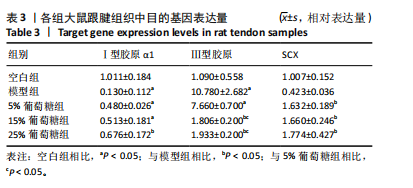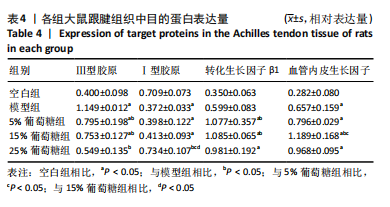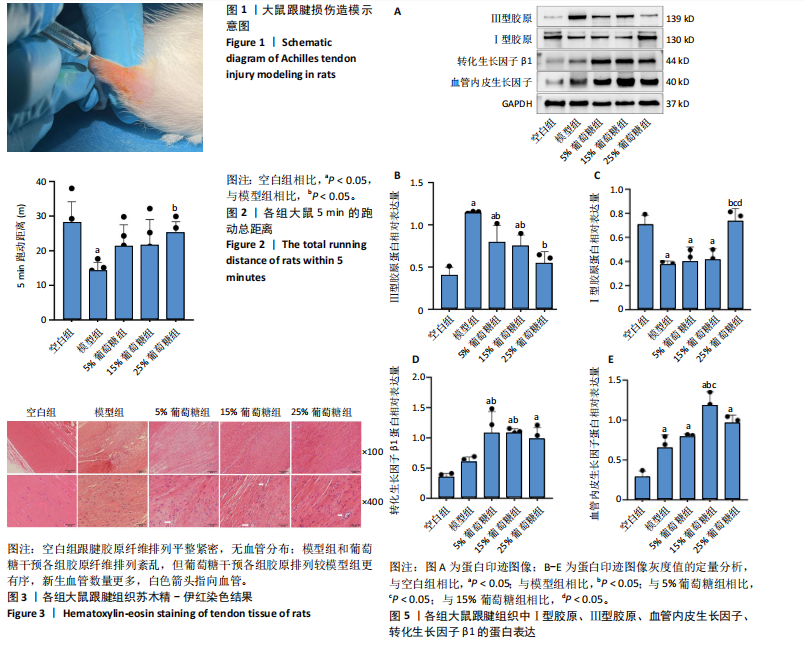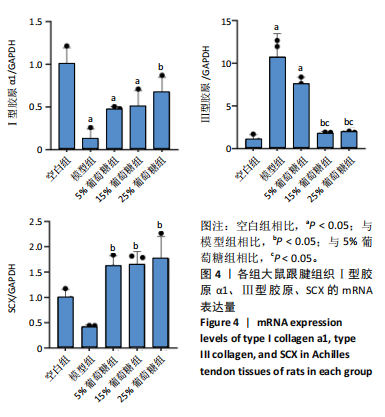[1] MILLAR NL, SILBERNAGEL KG, THORBORG K, et al. Tendinopathy. Nat Rev Dis Primers. 2021;7(1):1.
[2] FLINT JH, WADE AM, GIULIANI J, et al. Defining the terms acute and chronic in orthopaedic sports injuries: A systematic review. Am J Sports Med. 2014;42(1):235-241.
[3] GARZÓN M, BALASCH-BERNAT M, COOK C, et al. How long does tendinopathy last if left untreated? Natural history of the main tendinopathies affecting the upper and lower limb: A systematic review and meta-analysis of randomized controlled trials. Musculoskelet Sci Pract. 2024;72:103103.
[4] DE VOS RJ, VAN DER VLIST AC, ZWERVER J, et al. Dutch multidisciplinary guideline on Achilles tendinopathy. Br J Sports Med. 2021;55(20): 1125-1134.
[5] DARRIEUTORT-LAFFITE C, SOSLOWSKY LJ, LE GOFF B. Molecular and structural effects of percutaneous interventions in chronic Achilles tendinopathy. Int J Mol Sci. 2020;21(19):7000.
[6] CHENG L, ZHENG Q, QIU K,et al. Mitochondrial destabilization in tendinopathy and potential therapeutic strategies. J Orthop Translat. 2024;49:49-61.
[7] KENYON M, DRIVER P, MALLOWS A, et al. Characteristics of patients seeking National Health Service (NHS) care for Achilles tendinopathy: A service evaluation of 573 patients. Musculoskelet Sci Pract. 2024; 74:103156.
[8] RIEL H, LINDSTRØM CF, RATHLEFF MS, et al. Prevalence and incidence rate of lower-extremity tendinopathies in a Danish general practice: A registry-based study. BMC Musculoskelet Disord. 2019;20(1):239.
[9] TOGNOLO L, SCANU A, VARGIU C, et al. Dextrose prolotherapy for chronic tendinopathy: A scoping review. Eur J Integr Med. 2022;45(3): 123-130.
[10] HAGGAG MA, AL-BELASY FA, SAID AHMED WM. Dextrose prolotherapy for pain and dysfunction of the TMJ reducible disc displacement: A randomized, double-blind clinical study. J Craniomaxillofac Surg. 2022;50(5):426-431.
[11] CORTEZ VS, MORAES WA, TABA JV, et al. Comparing dextrose prolotherapy with other substances in knee osteoarthritis pain relief: A systematic review. Clinics (Sao Paulo). 2022;77:100037.
[12] ZHU M, RABAGO D, CHUNG VC, et al. Effects of hypertonic dextrose injection (prolotherapy) in lateral elbow tendinosis: A systematic review and meta-analysis. Arch Phys Med Rehabil. 2022;103(11):2209-2218.
[13] AKCAY S, GUREL KANDEMIR N, KAYA T, et al. Dextrose prolotherapy versus normal saline injection for the treatment of lateral epicondylopathy: A randomized controlled trial. J Altern Complement Med. 2020;26(12):1159-1168.
[14] APAYDIN H, BAZANCIR Z, ALTAY Z. Injection therapy in patients with lateral epicondylalgia: Hyaluronic acid or dextrose prolotherapy? A single-blind, randomized clinical trial. J Altern Complement Med. 2020; 26(12):1169-1175.
[15] YELLAND M, RABAGO D, RYAN M, et al. Prolotherapy injections and physiotherapy used singly and in combination for lateral epicondylalgia: A single-blinded randomized clinical trial. BMC Musculoskelet Disord. 2019;20(1):509.
[16] LIN CL, CHEN YW, WU CW, et al. Effect of hypertonic dextrose injection on pain and shoulder disability in patients with chronic supraspinatus tendinosis: A randomized double-blind controlled study. Arch Phys Med Rehabil. 2022;103(2):237-244.
[17] CIFTCI YGD, TUNCAY F, KOCAK FA, et al. Is Low-Dose Dextrose Prolotherapy as Effective as High-Dose Dextrose Prolotherapy in the Treatment of Lateral Epicondylitis? A Double-Blind, Ultrasound Guided, Randomized Controlled Study. Arch Phys Med Rehabil. 2023;104(2): 179-187.
[18] 王卓琳. 不同浓度高渗葡萄糖对兔跟腱病模型Ⅰ、Ⅲ型胶原及IL-1β表达影响的实验研究[D]. 成都:成都体育学院,2021.
[19] MARTINS CA, BERTUZZI RT, TISOT RA, et al. Dextrose prolotherapy and corticosteroid injection into rat Achilles tendon. Knee Surg Sports Traumatol Arthrosc. 2012;20(10):1895-1900.
[20] JOHNSTON E, KOU Y, JUNGE J, et al. Hypertonic dextrose stimulates chondrogenic cells to deposit collagen and proliferate. Cartilage. 2021; 13(2_suppl):213S-224S.
[21] SCHULZE-TANZIL GG, CÁCERES MD, STANGE R, et al. Tendon healing: A concise review on cellular and molecular mechanisms with a particular focus on the Achilles tendon. Bone Joint Res. 2022;11(8):561-574.
[22] SUBRAMANIAN A, SCHILLING TF. Tendon development and musculoskeletal assembly: Emerging roles for the extracellular matrix. Development. 2015;142(24):4191-4204.
[23] HAN DC, ISONO M, HOFFMAN BB, et al. High glucose stimulates proliferation and collagen type I synthesis in renal cortical fibroblasts: Mediation by autocrine activation of TGF-beta.J Am Soc Nephrol. 1999; 10(9):1891-1899.
[24] SIADAT AH, ISSEROFF RR. Prolotherapy: Potential for the treatment of chronic wounds? Adv Wound Care. 2019;8(4):160-167.
[25] LI H, LUO S, WANG H, et al. The mechanisms and functions of TGF-β1 in tendon healing. Injury. 2023;54(11):111052.
[26] MILLAR NL, MURRELL GAC, MCINNES IB. Alarmins in tendinopathy: Unravelling new mechanisms in a common disease. Rheumatology (Oxford). 2013;52(5):769-779.
[27] BEST KT, LEE FK, KNAPP E, et al. Deletion of NFKB1 enhances canonical NF-κB signaling and increases macrophage and myofibroblast content during tendon healing. Sci Rep. 2019;9(1):10926.
[28] LI J, LIU ZP, XU C, et al. TGF-β1-containing exosomes derived from bone marrow mesenchymal stem cells promote proliferation, migration and fibrotic activity in rotator cuff tenocytes. Regen Ther. 2020;15:70-76.
[29] ZHANG H, YANG L, HAN Q, et al. Antifibrotic effects of quercetin on TGF-β1-induced vocal fold fibroblasts. Am J Transl Res. 2022;14(12): 8552-8561.
[30] CHEN CH, LIN YH, CHEN CH, et al. Transforming growth factor beta 1 mediates the low-frequency vertical vibration enhanced production of tenomodulin and type I collagen in rat Achilles tendon. PLoS One. 2018;13(10):e0205258.
[31] MAJEWSKI M, HEISTERBACH P, JAQUIÉRY C, et al. Improved tendon healing using bFGF, BMP-12 and TGFβ1 in a rat model. Eur Cell Mater. 2018;35:318-334.
[32] SHI Z, YAO C, SHUI Y, et al. Research progress on the mechanism of angiogenesis in wound repair and regeneration. Front Physiol. 2023;14: 1284981.
[33] KUMAR I, STATON CA, CROSS SS, et al. Angiogenesis, vascular endothelial growth factor and its receptors in human surgical wounds. Br J Surg. 2009;96(12):1484-1491.
[34] LIU X, ZHU B, LI Y, et al. The role of vascular endothelial growth factor in tendon healing. Front Physiol. 2021;12:766080.
[35] DE GIROLAMO L, MORLIN AMBRA LF, PERUCCA ORFEI C, et al. Treatment with human amniotic suspension allograft improves tendon healing in a rat model of collagenase-induced tendinopathy. Cells. 2019;8(11):1411.
[36] 朱斌. 离心运动上调Scx提高Ⅰ型胶原合成促进慢性跟腱病修复的机制研究[D]. 泸州:西南医科大学,2022.
[37] ZHANG T, WANG Y, DING L, et al. Efficacy of hypertonic dextrose proliferation therapy in the treatment of rotator cuff lesions: a meta-analysis. J Orthop Surg Res. 2024;19(1):297.
[38] LIANG W, ZHOU C, DENG Y, et al. The Current Status of Various Preclinical Therapeutic Approaches for Tendon Repair. Ann Med. 2024; 56(1):2337871.
[39] FULLERTON BD. Prolotherapy for the Thoracolumbar Myofascial System. Phys Med Rehabil Clin N Am. 2018;29(1):125-138.
[40] MAO AS, MOONEY DJ. Regenerative Medicine: Current Therapies and Future Directions. Proc Natl Acad Sci U S A. 2015;112(47):14452-14459.
[41] HOU J, YANG R, VUONG I, et al. Biomaterials Strategies to Balance Inflammation and Tenogenesis for Tendon Repair. Acta Biomater. 2021;130:1-16.
[42] DARRIEUTORT-LAFFITE C, BLANCHARD F, SOSLOWSKY LJ, et al. Biology and Physiology of Tendon Healing. Joint Bone Spine. 2024;91(5): 105696.
[43] SUBRAMANIAN A, KANZAKI LF, GALLOWAY JL, et al. Mechanical Force Regulates Tendon Extracellular Matrix Organization and Tenocyte Morphogenesis through TGFbeta Signaling. Elife. 2018;7:e38069.
[44] DOCHEVA D, MÜLLER SA, MAJEWSKI M, et al. Biologics for Tendon Repair. Adv Drug Deliv Rev. 2015;84:222-239.
[45] MAFFULLI N, MOLLER HD, EVANS CH. Tendon Healing: Can It Be Optimised? Br J Sports Med. 2002;36(5):315-316.
[46] ZHAO AT, CABALLERO CJ, NGUYEN LT, et al. A Comprehensive Update of Prolotherapy in the Management of Osteoarthritis of the Knee.Orthop Rev (Pavia). 2022;14(4):33921.
[47] VOLETI PB, BUCKLEY MR, SOSLOWSKY LJ. Tendon Healing: Repair and Regeneration. Annu Rev Biomed Eng. 2012;14:47-71.
[48] 刘雪丽, 沈丽, 毕文光,等. 低强度脉冲超声对大鼠急性肌腱损伤早期血管生成的影响及机制[J]. 中国组织工程研究,2024,28(32): 5097-5103.
[49] GUERQUIN MJ, CHARVET B, NOURISSAT G, et al. Transcription Factor EGR1 Directs Tendon Differentiation and Promotes Tendon Repair. J Clin Invest. 2013;123(8):3564-3576.
[50] FERRARA N, ADAMIS AP. Ten Years of Anti-Vascular Endothelial Growth Factor Therapy. Nat Rev Drug Discov. 2016;15(6):385-403.
[51] HUANG Y, PAN M, SHU H, et al. Vascular Endothelial Growth Factor Enhances Tendon‐bone Healing by Activating Yes‐associated Protein for Angiogenesis Induction and Rotator Cuff Reconstruction in Rats. J Cell Biochem. 2020;121(3):2343-2353.
[52] AHADI T, CHAM MB, MIRMOGHTADAEI M, et al. The Effect of Dextrose Prolotherapy versus Placebo/Other Non-Surgical Treatments on Pain in Chronic Plantar Fasciitis: A Systematic Review and Meta-Analysis of Clinical Trials. J Foot Ankle Res. 2023;16(1):5.
[53] DA RÉ GUERRA F, VIEIRA CP, OLIVEIRA LP, et al. Low-Level Laser Therapy Modulates Pro-Inflammatory Cytokines after Partial Tenotomy. Lasers Med Sci. 2016;31(4):759-766.
[54] LI Y, LIU X, LIU X, et al. Transforming Growth Factor-β Signalling Pathway in Tendon Healing. Growth Factors. 2022;40(3-4):98-107.
[55] INOUE M, NAKAJIMA M, OI Y, et al. The Effect of Electroacupuncture on Tendon Repair in a Rat Achilles Tendon Rupture Model. Acupunct Med. 2015;33(1):58-64.
[56] FERRARI G, COOK B, TERUSHKIN V, et al. Transforming Growth Factor-Beta 1 (Tgf-β1) Induces Angiogenesis through Vascular Endothelial Growth Factor (Vegf)-Mediated Apoptosis. J Cell Physiol. 2009;219(2):449-458.
[57] PAN PJ, WANG JC, TSAI CC, et al. Identification of Early Response to Hypertonic Dextrose Prolotherapy Markers in Knee Osteoarthritis Patients by an Inflammation-Related Cytokine Array. J Chin Med Assoc. 2022;85(4):525-531.
[58] YUAN H. Collagen and Chondroitin Sulfate Functionalized Bioinspired Fibers for Tendon Tissue Engineering Application.Int J Biol Macromol. 2021;170:248-260.
[59] HILLEGE MMG, GALLI CARO RA, OFFRINGA C, et al. TGF-β Regulates Collagen Type I Expression in Myoblasts and Myotubes via Transient Ctgf and Fgf-2 Expression: 2. Cells. 2020;9(2):375.
[60] VARRICCHIO L, IANCU-RUBIN C, UPADHYAYA B, et al. TGF-β1 protein trap AVID200 beneficially affects hematopoiesis and bone marrow fibrosis in myelofibrosis. JCI Insight. 2021;6(18):e145651.
|




